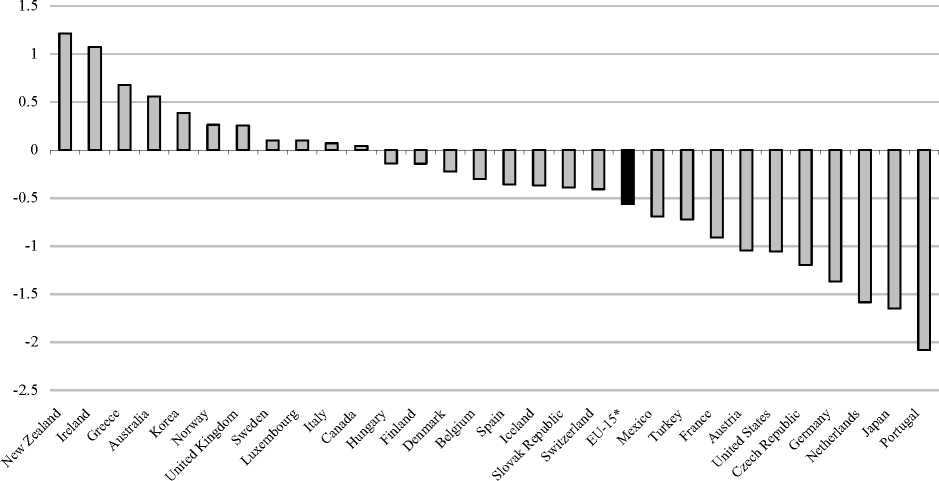Figure 3. Average output gaps 2001-2006
Per cent of trend GDP

* GDP weighted average.
Source : Data and projections from OECD Economic Outlook 76.
It could of course be argued that current structural policy settings reflect a collective
policy choice and that the associated weaknesses in terms of employment, productivity and
resilience are just the price to be paid for this choice. This argument is often presented with
reference to a particular European “social model”. In practice, however, there is no such thing as a
single European model. Indeed, some smaller European countries combine structural policy
settings that result in much better than average macroeconomic outcomes with social outcomes
that are as good as or better than in the larger euro-area economies.67 Hence, the argument that
weak macroeconomic performance is the price to pay for better social outcomes does not ring
true.
That said, structural reforms cannot generally be assumed to be Pareto improving. If they
were, they would presumably be politically easy to undertake. Rather, structural reforms usually
involve a reduction in rents and those who see their rent reduced can hardly be expected to be in
favour. The case for structural reform thus rests on a weighing of the losses for those who see
their rents reduced against the gains for others. It is a well-known feature of the political economy
of structural reform that those who see their rent reduced tend to be easy to identify, to be exposed
172
More intriguing information
1. Evaluating the Success of the School Commodity Food Program2. The technological mediation of mathematics and its learning
3. ADJUSTMENT TO GLOBALISATION: A STUDY OF THE FOOTWEAR INDUSTRY IN EUROPE
4. Mean Variance Optimization of Non-Linear Systems and Worst-case Analysis
5. The Value of Cultural Heritage Sites in Armenia: Evidence From a Travel Cost Method Study
6. The name is absent
7. Correlation Analysis of Financial Contagion: What One Should Know Before Running a Test
8. Conflict and Uncertainty: A Dynamic Approach
9. References
10. Accurate and robust image superresolution by neural processing of local image representations